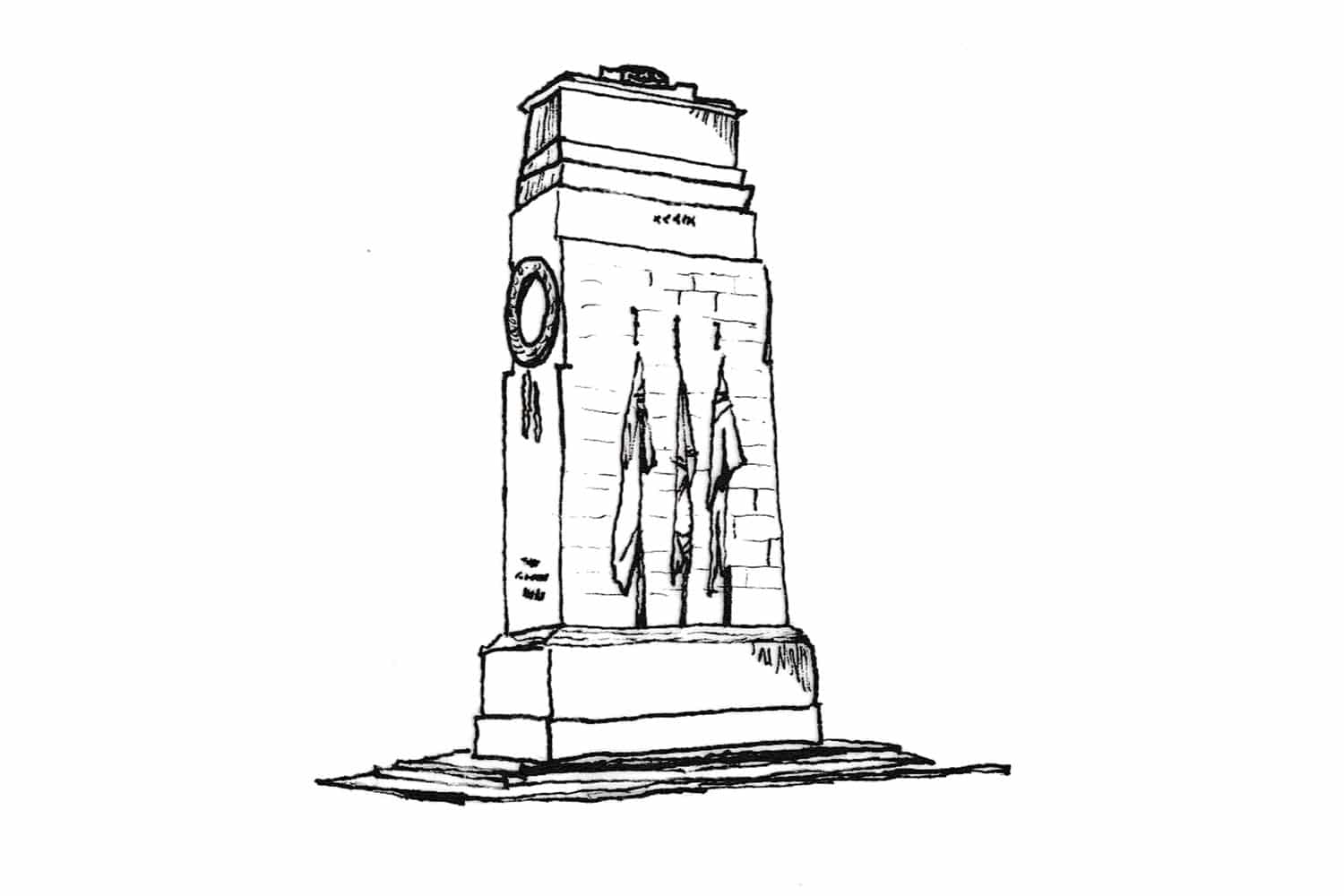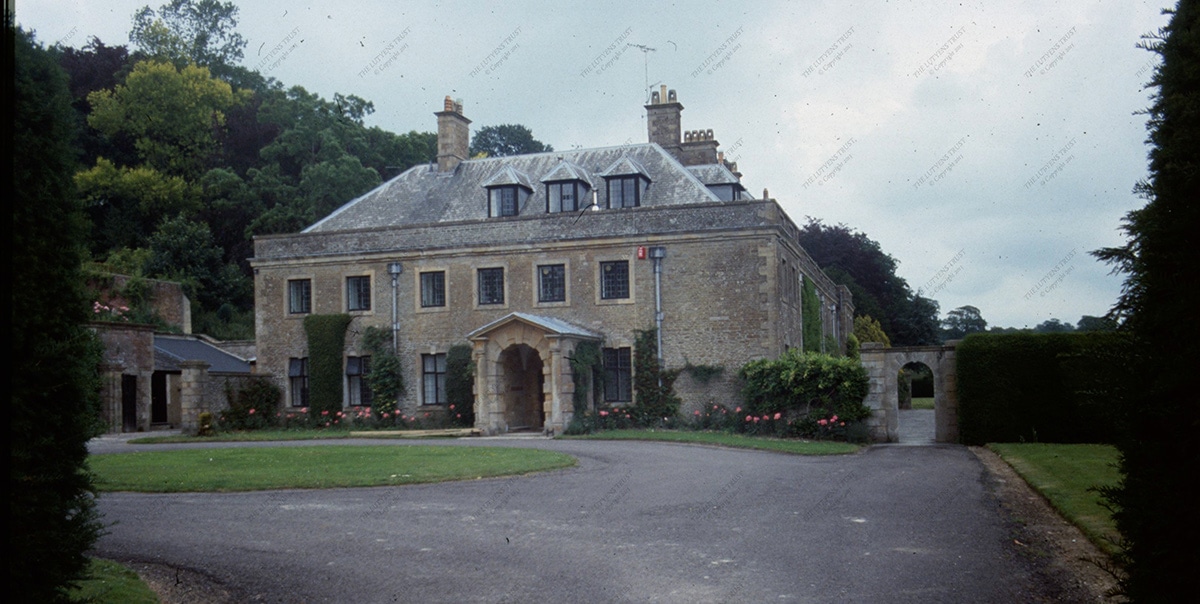
Description
The plan of Marshcourt belongs to the group of houses that includes Orchards, Overstrand Hall and Little Thakeham. It is basically a long transverse corridor with staircase at one end, servants’ quarters at the other and the front door in the middle. All the main living rooms open off this corridor to the South. The house was built for a man described by Hussey as an ‘adventurer, stockjobber and sportsman’. He and Lutyens became firm friends and this sympathy shows in the quality of this house. Lutyens, like his client, loved the Hampshire downs and the valley of the River Test which he described as ‘one of God’s kindest and most gentle of his creations’, and he appreciated the special qualities of the chalk landscape. He used ‘clunch’ for Marshcourt drawn from the hard lower beds of the chalk. Scarcely used since the 17th century Lutyens revived its use with flint and russet red bricks and tiles. The house is full blooded Tudor in style – there is a sense that the place was conceived as a great hunting lodge for a vigorous client. The long, low north front tells you little about the house except the vast size of the all-embracing roof. It is the chimney stacks on the south-west corner and the sunken garden that suddenly changes this austere essay in chalk into a pageant of architectural triumphs. Twisted brick chimneys and tile finials recall Hampton Court, bays and parapet walls take us back to Haddon Hall (c.1600) and forward to Castle Drogo. Terraces, lawns, pools and leadwork suggest Italy rather than Hampshire. Interiors are an incredibly rich mixture of heavy classicism with chalk hewn fireplaces and even a chalk billiard table. Walnut, oak and plaster and marble are used in profusion. Undoubtedly a very personal tour de force that is totally original and successful. (Amery et al., 1981, cat no.135)A moat and bridge complete the enclosure of a quadrangular entrance court to a basically E-shaped house. Bay windows and chimney-stacks break the south façade into vertical elements arranged irregularly in plan and contrast with the biaxial symmetry of the north front whose horizontality is supported by the first-floor corridor windows which almost appear as fenêtre longeur. The garden is contained with the house by a series of balustraded terraces, pergolas and changes in level. Its closed forms contrast with open views across the valley of the River Trent. Within the building stylistic contrasts occur. Through the use of various period details rooms appear to have been decorated at later dates than the ‘Tudor’ style of the house. Outside, the random blocks of flint and tile seem insertions into the chalk ashlar of the walls which rise from a chequerboard band of chalk and flint. An early proposal for thatching the building was not executed. (Inskip, 1979, p.52)
Bibliography
Amery, C., Richardson, M. and Stamp, G. (1981) Lutyens, the Work of the English Architect Sir Edwin Lutyens (1869-1944): Hayward Gallery London, 18 November 1981-31 January 1982. London: Arts Council of Great Britain. Inskip, P. (1986) Edwin Lutyens: Architectural Monographs 6. 2nd edn. London: Academy Editions.Also Cited In
Bullen M, Hubbuck R, Crook J & Pevsner N (2010) Hampshire: Winchester and the North. The Buildings of England. New Haven: Yale University Press.Gradidge, R. (1982) Edwin Lutyens: Architect Laureate. London: Allen & Unwin.
Weaver, L. (1913) Houses and Gardens by E L Lutyens. London: Country Life.
Aslet, C. (1982) The Last Country Houses. New Haven: Yale University Press.
Pevsner, N. (1962) Hampshire. The Buildings of England. Harmondsworth: Penguin.
Butler, A., 1950. The architecture of Sir Edwin Lutyens: the Lutyens memorial series. Vol 1: Country Houses, Country Life: London and Scibners: New York.
Butler, A., 1950. The architecture of Sir Edwin Lutyens: the Lutyens memorial series. Vol 1: Country Houses, Country Life: London and Scibners: New York.
L, M.P., 1906. COUNTRY HOMES: MARSHCOURT, HAMPSHIRE, THE RESIDENCE OF… MR. HERBERT JOHNSON. Country Life (Archive : 1901 – 2005), 20(504), pp. 306-317.
WEAVER, L., 1913. COUNTRY HOMES GARDENS OLD & NEW: MARSHCOURT, HAMPSHIRE, THE RESIDENCE OF MR. HERBERT JOHNSON. Country Life (Archive : 1901 – 2005), 33(850), pp. 562-571.
Listing Grade
I,II*,II*,II,IIListing Reference
1093803 1000149 1093807 1000149 1093780 1167385Client
Herbert Johnson


